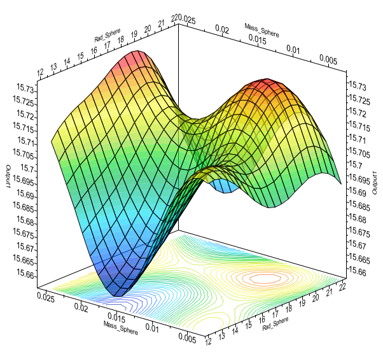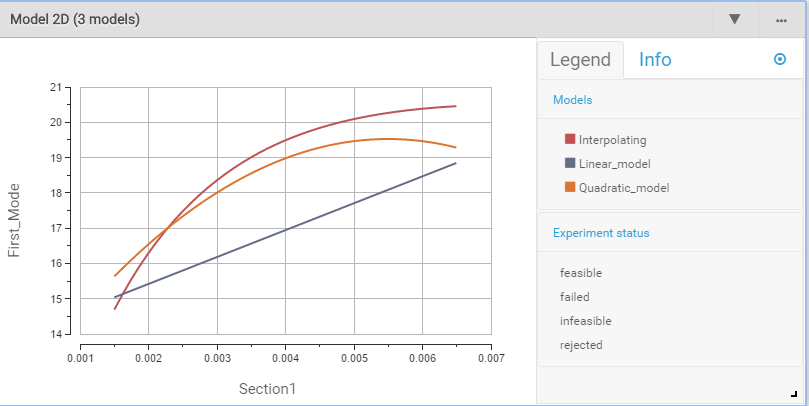RESPONSE SURFACE MODELING
CONDENSING COMPLEX ENGINEERING PROCESSES
Response Surface Modeling (RSM) condenses complex engineering simulations into so-called surrogate models, meta-models, or approximation models - using the results of virtual or physical prototyping experiments defined by Design of Experiments. It involves a collection of mathematical and statistical methods that help model and analyze problems in which a response of interest is impacted by several parameters.
Enabling ultrafast analysis
Surrogate models are extremely efficient in providing valuable information about the relationship between design parameters and response metrics. They make it possible to evaluate new designs in seconds without requiring a full detailed engineering analysis, or to perform ultrafast design optimization. In particular when the underlying physics simulations are computationally expensive, the RSMs are a real time saver.

A wide range of methods
Response Surface methods range from classical Least Squares approaches to advanced stochastic interpolation methods. Least Squares methods, on the one hand, identify the best-fitting model to a given set of data points delivered by Design of Experiments (DOE). These methods achieve this by minimizing the sum of the squares of individual point deviations from the model. Stochastic interpolation methods, on the other hand, rely on defining new data points from a discrete set of known data.

Delivering validated accuracy
Since the best approximation model depends on the engineering problem at hand, it is recommended practice to build more than one model. To verify the accuracy and measure the predictive capabilities of each model, leave-one-out techniques can be automatically used. These techniques deliver a set of quality measures that allow to select the most appropriate meta-model, and to have its fidelity level fully validated for even the most complex multiphysics engineering challenges.

Versatile plugin technology
While our proprietary RSM technologies cover a broad range of methods, the openness of our platform enables engineering teams to extend these capabilities by plugging in any in-house developed Response Surface methods. Seamless integration ensures full access to their own RSM methods as well as to our complete set of high-quality RSM post-processing functions. Interactive graphic displays allow them to visualize response surface models and assess their accuracy in great detail – no matter how the model has been built. Plugged-in RSM models can also be used in combination with any of our available optimization, robustness and reliability methods.

Functional Mock-up Units
Response Surface models can be exported to create so-called Functional Mock-up Units (FMUs), ready to be embedded into any third-party systems simulation software. Exported FMU’s are fully independent from the software used to simulate component or subsystem physics, and can be readily handled by various FMI Master tools (such as Dymola, JModelica, LMS Imagine.Lab AMESim, LMS Virtual.Lab Motion, MapleSim, MATLAB/Simulink, SimulationX, etc.), allowing several FMUs to be coupled and run inside a co-simulation environment. Exported FMUs can also be used in embedded control systems and hardware-in-the-loop (HIL) simulations.

WORKING TOWARD THE BEST
Discover how »©2025 Noesis Solutions • Use of this website is subject to our legal disclaimer
Cookie policy • Cookie Settings • Privacy Notice • Design & Development by Zenjoy